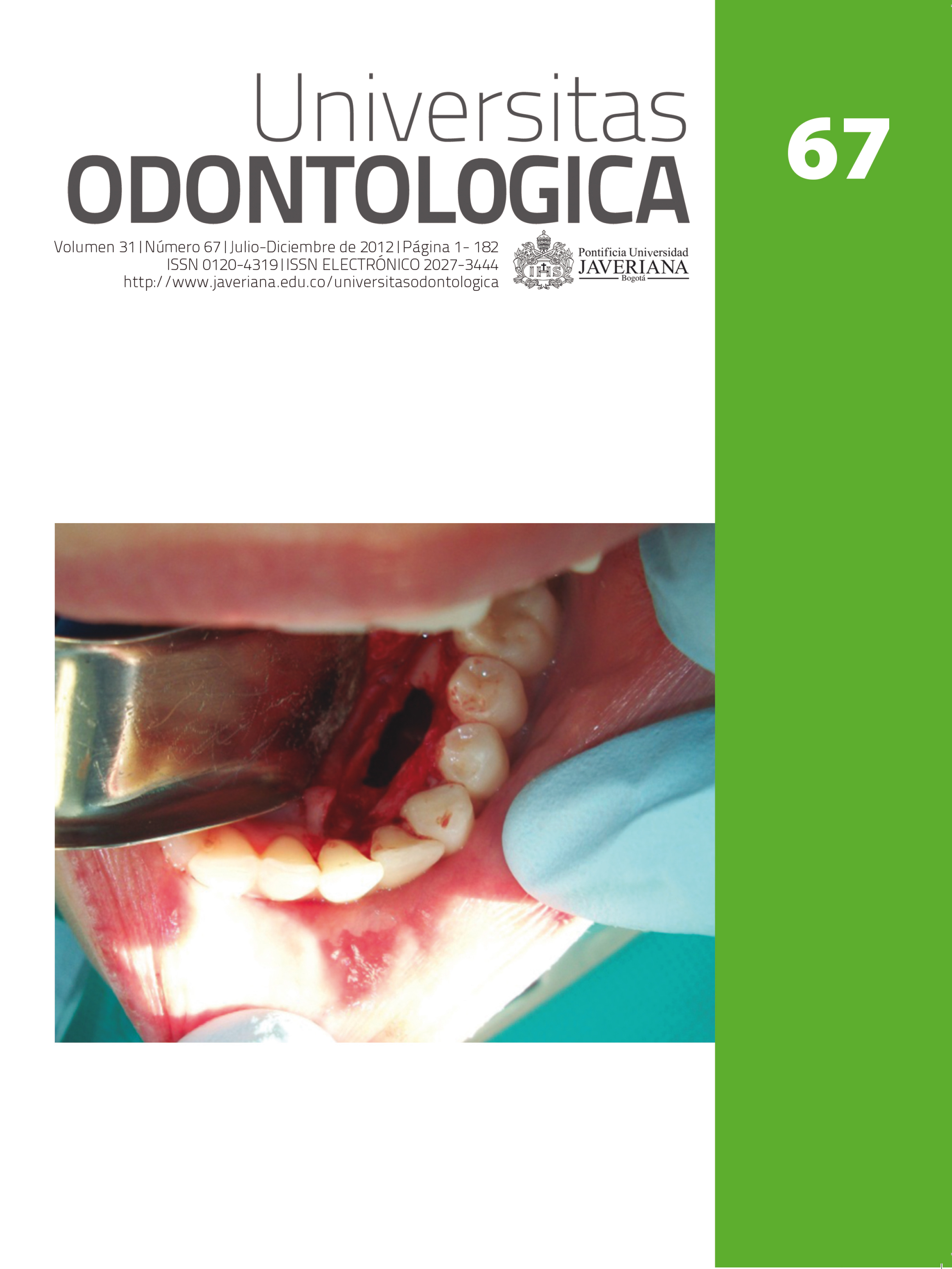Abstract
Propósito: Determinar y comparar la expresión de la cicloxigenasa-2 (COX-2) en el carcinomaescamocelular de lengua (CECL) según el grado de diferenciación, con la finalidadde explorar si este puede ser un marcador molecular útil en el diagnóstico y pronóstico delcáncer de la cavidad oral. Métodos: Se utilizaron 45 especímenes con CECL, 15 de ellos biendiferenciados, 12 moderadamente diferenciados, 18 mal diferenciados, un control positivode carcinoma de colon y un control negativo de mucosa oral sana. La identificación de laCOX-2 se obtuvo por medio de inmunohistoquímica. Resultados: La muestra de mucosalingual sana expresó la COX-2 en bajo nivel; el 60 % de las quince muestras de carcinomaescamocelular diferenciado mostraron un bajo nivel de expresión, el 41,3 % de 12 muestrasde carcinoma moderadamente diferenciado mostraron una alta expresión, y el 74 % de 18muestras de carcinoma no diferenciado mostraron una alta expresión de la enzima. Conclusión:La expresión de la COX-2 aumenta si el carcinoma es indiferenciado, lo cual sugiereque esta enzima podría desempeñar un papel importante en el desarrollo histopatológicodel CECL, tanto en las etapas iniciales como en las tardías.
Aim: Determine and compare the expression of cyclooxygenase-2 (COX-2) in squamouscell carcinoma of the tongue (SCCT) in three degrees of differentiation, in order to verify ifthis may be a molecular marker useful in the diagnosis and prognosis of oral cavity cancer.Methods: The sample consisted of 45 specimens with SCCT (15 well-differentiated, 12 moderatelydifferentiated, 18 poorly differentiated), a positive control (colon carcinoma) and anegative control (healthy oral mucosa). The identification of COX-2 was obtained throughimmunohistochemistry. Results: Samples of healthy lingual mucosa showed a low expressionof COX-2, 60 % of the 15 samples of well-differentiated squamous cell carcinoma showeda low expression of COX-2, 41.3 % of 12 samples of moderately differentiated carcinomashowed high expression, and 74 % of the 18 non-differentiated carcinoma samples showeda high expression of the enzyme. Conclusion: The expression of COX-2 increases in lessdifferentiated squamous cell carcinoma, which suggests that identification of COX-2 in thehistologic development of squamous carcinoma of the tongue might be important in thedifferentiation of both, the early and late stages.
This journal is registered under a Creative Commons Attribution 4.0 International Public License. Thus, this work may be reproduced, distributed, and publicly shared in digital format, as long as the names of the authors and Pontificia Universidad Javeriana are acknowledged. Others are allowed to quote, adapt, transform, auto-archive, republish, and create based on this material, for any purpose (even commercial ones), provided the authorship is duly acknowledged, a link to the original work is provided, and it is specified if changes have been made. Pontificia Universidad Javeriana does not hold the rights of published works and the authors are solely responsible for the contents of their works; they keep the moral, intellectual, privacy, and publicity rights.
Approving the intervention of the work (review, copy-editing, translation, layout) and the following outreach, are granted through an use license and not through an assignment of rights. This means the journal and Pontificia Universidad Javeriana cannot be held responsible for any ethical malpractice by the authors. As a consequence of the protection granted by the use license, the journal is not required to publish recantations or modify information already published, unless the errata stems from the editorial management process. Publishing contents in this journal does not generate royalties for contributors.


